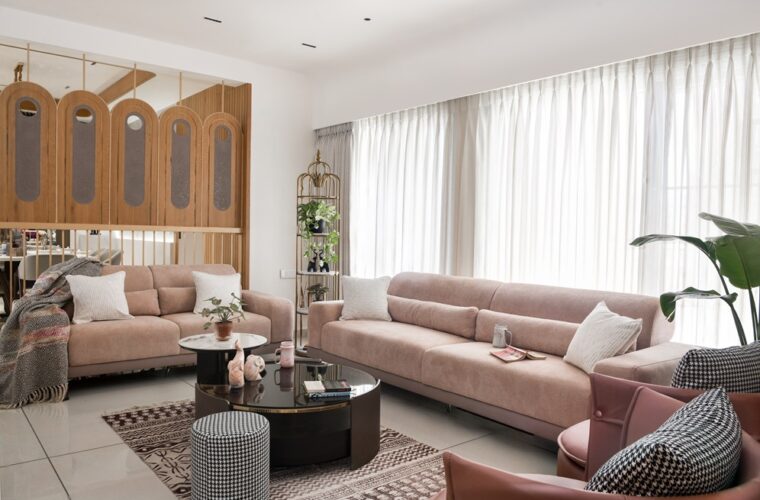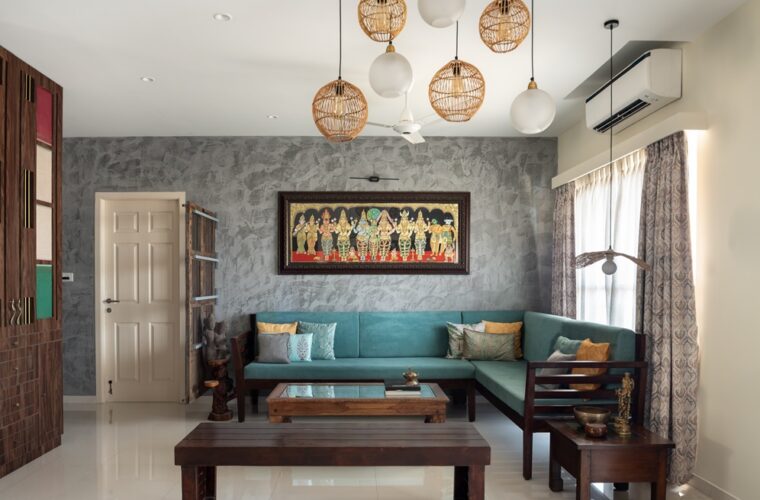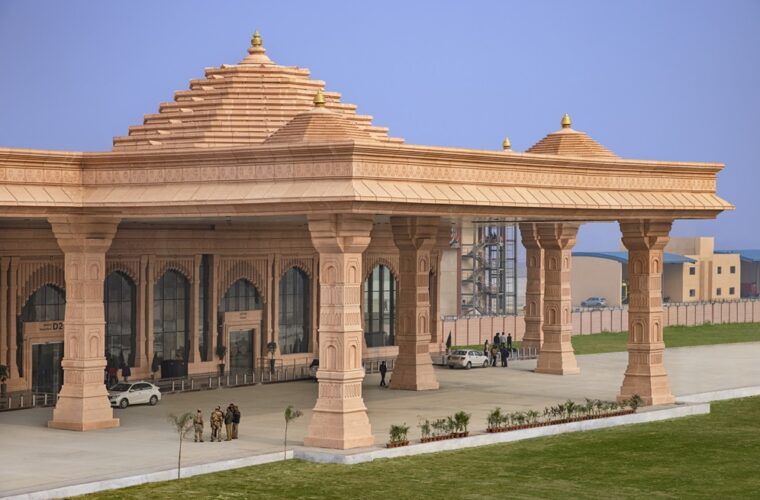Efficient planning for New Delhi office
Photography: Avesh Gaur
New Delhi-based Lyth Design has designed the CSF Office, which is a commercial project dedicated to children’s safety and education, women’s empowerment and welfare, the fight against climate change, and more. The client wanted a humble, thoughtful, and comforting office. Spanning 22,000 sq. ft., this is an NGO headquarters and is designed cost-efficiently for a young and dynamic team. The client brief was to keep it simple as the non-profit organization commissioned the work, and the offices run by different groups are divided over four levels. The firm chose to find the most efficient way to distinguish each level but unite them under a common theme.
Terrazzo flooring, curved walls, exposed mechanics, and large glass partitions are the key design elements on the four levels. Each floor is branded with a different color to represent the office’s brand ethos. The ground floor in grey houses the reception, the executive boardroom, and formal and informal interaction spaces, A branding wall visually connecting the reception and driveway is designed as a display for the logos of the organisation working in the building. The reception table is made from unfinished metal and complements the veneer paneling in the background.
Curved edges for the corridors allow softer and more fluid space planning and movement. The conference room is designed with a terrazzo table as the center piece, along with veneer walls and an acoustically-treated ceiling to prevent noise and echoes. Large glass partitions double as canvases for creative thinking while allowing light to penetrate into the office. Instead of private offices, the project follows an open-plan layout with acoustically-treated enclosures for executives. Corners and telephone booths facilitate quiet getaways and the need for privacy, along with small green pockets to keep the indoor air fresh.
An enormous tree wraps itself around the building’s northeastern corners and creates breakout zones planned across the floors. Library books and multiple seating levels become conversation starters, and the artwork on each floor reflects the team’s efforts to encourage and inspire. For instance, the first floor works on children’s education, and the walls have images printed onto the canvases of the children whose lives are impacted by their work.
An interactive divider between the workspace and the pantry at the rear adds uniqueness to the green room, and the divider is made up of loose seating squares that can be picked up and moved around. On the pink floor, a wall of fins and grey concrete steps add color. As the office is housed within a glass building, the windows are coated with a film to reduce the heat gain and subsequently conserve energy. Most of the loose furniture has been repurposed. To create biophilia within the workspace, the terrace is proposed to be transformed into a roof garden that acts as a common break-out and seating space for the entire building.














